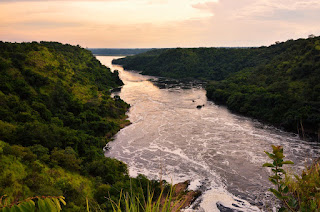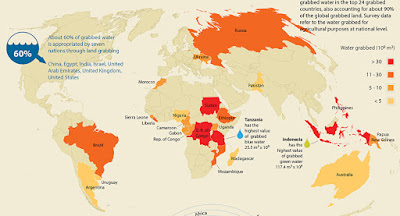'Sharing the Nile': The Grand Ethiopian Renaissance Dam
Hello! In the next few blog posts I will be looking
at the Nile, maintaining my focus on transboundary water management.
The Nile river is a key example of a
transboundary water source. It is an international river shared by 11 riparian
countries, and acts as the primary water source for downstream regions; Egypt
and Sudan (Ahmed and Elsanabary, 2015). In the past, Egypt has dominated
control over the Nile, claiming that 2/3 of the flow is theirs based on a treaty
signed with Sudan in 1959 (The Economist, 2016). However, in the last decade
the population of Ethiopia overtook that of Egypt; 240 million vs 130 million
respectively. This has resulted in Ethiopia’s desire to manage this water
source not only to fight poverty but also to support and improve solidarity, as
well as provide sustainable economic development for themselves and
neighbouring regions.
Grand Ethiopian Renaissance Dam (GERC)
 |
| GERC (Al Ahram Weekly, 2018) |
The Grand Ethiopian Renaissance Dam is a
large-scale development project that commenced in 2011 on the Blue Nile. The
dam is going to be Ethiopia’s largest and most important power projects on the
Nile and will generate 5,250 megawatts of electricity for Ethiopia and
neighbouring countries. Additionally, it is expected to hold 67 billion meters
cubed of water- making it the largest man-made lake in Ethiopia, providing a
range of opportunities including the potential for fishery cultivation as well
as the ability for Ethiopia to meet its domestic water needs (The Economist,2016).
Despite the abundant possibilities for sustainable
development this dam provides Ethiopia and other countries downstream, the plan
has created dispute from Egypt’s leaders who believe the creation of the dam
will reduce water flow downstream, which will have severe impacts on Egypt’s
population. Abdellatif, the owner of the Dal group which runs farms and
irrigation in Egypt states “The Nile is the lifeline of Egypt”…"they are
very concerned about anything that you do with that water”. The Nile being
Egypt's only secure source of water leaves them vulnerable to developments on
the river, which act as a threat to their sovereignty (BBC, 2018). For the
first time, Ethiopia is combining their physical power as an upstream country
and their economic power being able to fund their own dam to exert control over
water resources. Unless Ethiopia can agree on a deal with Egypt and Sudan, this
dam could trigger a war over water. Considering 86% of the Nile comes from the
Ethiopian highlands, and Ethiopia continues to develop as a strong economic
presence, Egypt’s should be prepared to have their power and control over the
Nile challenged.
Integrated water resource management
For decades, the Nile Basin has faced complex
challenges similar to that of the Grand Ethiopian Renaissance dam, over proper
management of the Nile water. Problems include among others “disputes and
conflicts over the control and use of the Nile waters; extreme poverty, food
insecurity; droughts; floods; inadequate sanitary services; unreliable
electricity, water scarcity; lack of cooperation on the shared resources of the
Nile basin (Belay et al. 2009). The transboundary nature of the river
makes it difficult to conceptualise and control usage and cooperation over
water resources, this is fundamental to how political water can be.
The next post will look at the Nile Basin
Initiative, reflecting aspects of integrated water resource management to
highlight that the best way to manage and control a shared water source is to
maintain a cooperative relationship between governments and countries, to
consider the interests of all members sharing the same resource.



Nice blog! Do you think that the Nile Water Agreements of 1929 and 1959 are now outdated regarding upstream development? What framework of governance in the region do you think would be more effective?
ReplyDeleteThank you for your question James. The Nile water agreements of 1929 and 1959 are outdated and are based on longstanding colonial incentives which gave Egypt majority of the share over the Nile's waters. Now that other riparian countries have seen large-scale population growth and development, a new framework is needed to meet the needs of all those depending on the river for their livelihoods. The Nile Basin Initiative which I wrote about in my last blog post is a good start to a more integrative approach to water management, however there is still room for significant improvement.
DeleteI agree James and you ask a good question! Reply? The subsequent posts address this in part but it would be good to see a reply.
ReplyDelete